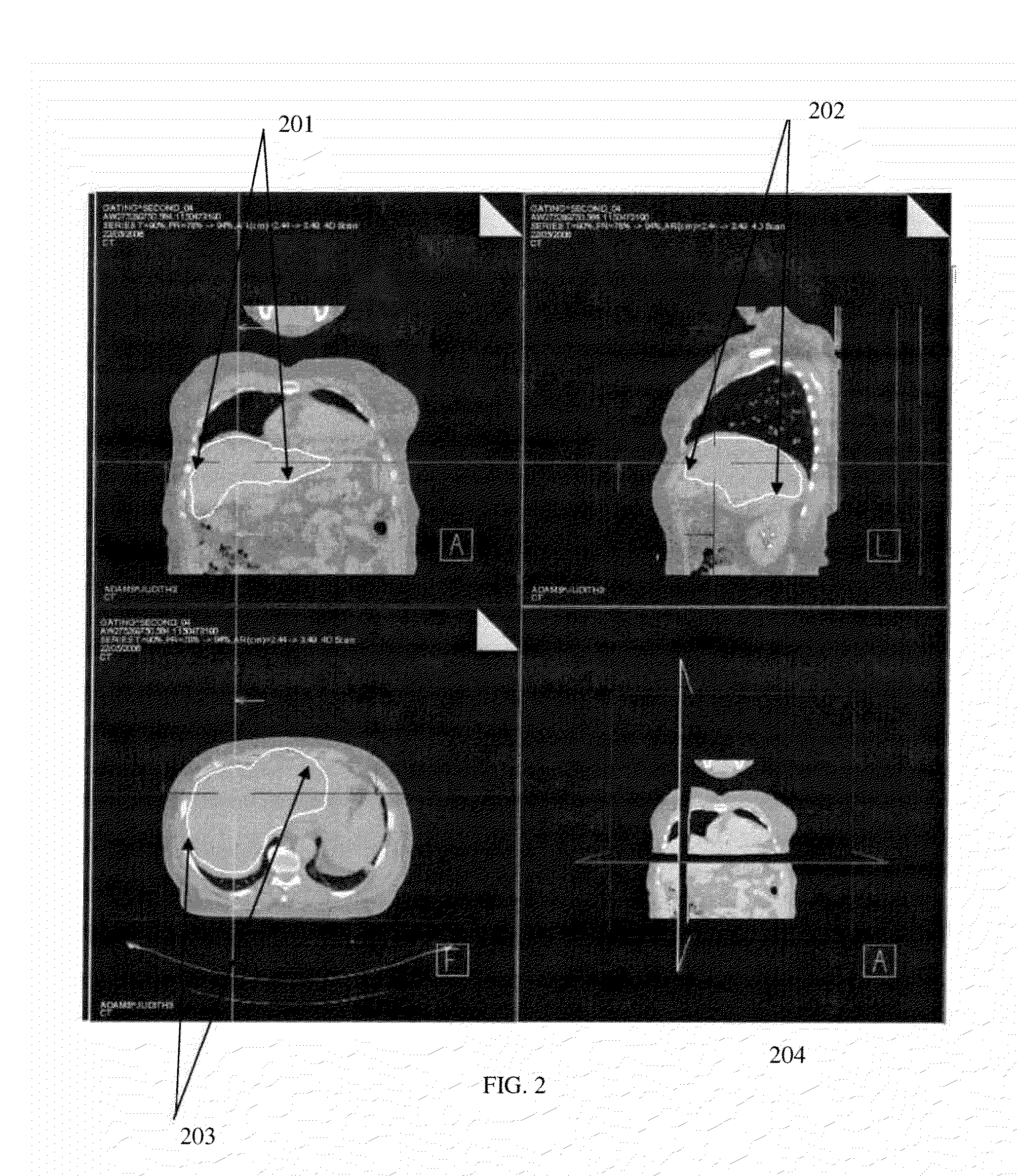Methods and systems for fully automatic segmentation of medical images
a technology of medical images and automatic segmentation, applied in image analysis, image enhancement, instruments, etc., can solve the problems of no universal method and system for producing automatic segmentation, and no universal method and system has emerged
- Summary
- Abstract
- Description
- Claims
- Application Information
AI Technical Summary
Benefits of technology
Problems solved by technology
Method used
Image
Examples
first embodiment
[0041]In the present invention a graph based semi-automatic approach is used as the segmentation engine within the paradigm of a two phase model based segmentation approach. Image registration techniques are used during both the training and the segmentation phases. The graph-based semi-automatic approaches usually require a set of spatially dispersed seeds located on the object of the interest and its surroundings. During the learning or modeling phase, a strategy is devised to find a set of “optimal” weights for these seeds, indicating the degree or the probability of each voxel to belong to each of the target objects (or background).
Training / Modeling Phase
[0042]The procedure for computing the “optimal” seed weight distributions along with the weights is as follows:
[0043]1. Use a set of medical images, and delineate the region of interest (VOI) for each target segmentation object on each of them, i.e., perform a ground-truth segmentation of all the target objects on the training s...
second embodiment
[0055]In a second embodiment, the method consists of at least two major parts; offline model building and online segmentation. Both these parts utilize segmentation and registration techniques, which are detailed in this section.
Offline Model Building
[0056]The offline model building stage is simple and transparent for an end-user. For a given segmentation application, the user manually segments a small number (5-10) of datasets containing the target object. Let n represent the number of training datasets employed. Note that this small number of training segmentations is much less than the number of training segmentations required by machine learning approaches [12]. The output of the offline model building module is a fuzzy seed volume Maf corresponding to the atlas volume Ia, and an intensity distribution probability density function pa.
[0057]The fuzzy seed volume is generated by registering the training segmentations to the selected atlas dataset (i.e., Ia with corresponding initi...
PUM
 Login to View More
Login to View More Abstract
Description
Claims
Application Information
 Login to View More
Login to View More - R&D
- Intellectual Property
- Life Sciences
- Materials
- Tech Scout
- Unparalleled Data Quality
- Higher Quality Content
- 60% Fewer Hallucinations
Browse by: Latest US Patents, China's latest patents, Technical Efficacy Thesaurus, Application Domain, Technology Topic, Popular Technical Reports.
© 2025 PatSnap. All rights reserved.Legal|Privacy policy|Modern Slavery Act Transparency Statement|Sitemap|About US| Contact US: help@patsnap.com



